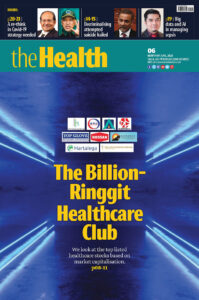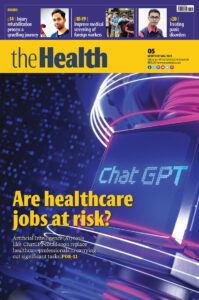Diabetes is a silent disease, and many only seek treatment after developing complications from it.
Diabetes can lead to complications in many body parts and increase the risk of dying prematurely. Possible complications include heart attack, stroke, kidney failure, leg amputation, vision loss and nerve damage. In pregnancy, poorly controlled diabetes increases the risk of fetal death and other complications.

“A population-level increase in the prevalence of diabetes may be attributable to a wide range of potential factors. Obesity is often seen as the main contributor to an increasing prevalence of diabetes,” said Deputy Director of Health (Public Health) Datuk Dr Norhayati Rusli.
“Obesity rate has increased steadily in Malaysia, from 15.1 per cent in 2011 to 19.7 per cent in 2019. Besides, ageing has also been associated with non-communicable diseases, including diabetes and Malaysia is expected to become an aged nation by 2030.”
The rate of obesity gives rise to insulin resistance which is the cause of diabetes, explained Consultant Physician and Endocrinologist, Dr Shalini Shree Dharan.
“Our environment promotes disease. Food is prevalent everywhere and every corner. The fast pace of life makes fast food an easy option for energy sources rather than preparing a healthy balanced diet.”
The reliance on fast foods and food delivery services leads to an obesogenic environment. Easy access to unhealthy foods that consist of high calories, highly-processed foods and refined starches or sugary beverages, in addition to a sedentary lifestyle, majorly contributed to being overweight and obese, subsequently increasing the risk of developing diabetes.
Dr Norhayati adds: “Other factors such as lifestyle (including physical inactivity and energy-dense diet), socioeconomic status, education, and urbanisation have also been identified as potentially important factors. These affect how people experience the world and the choices they make. When these conditions challenge people, they become health and wellness risk factors.”

Early detection and prevention
“Typical signs of uncontrolled diabetes include increased tiredness, increased urination and feeling thirsty,” explained National Diabetes Institute (NADI) Chairman, Emeritus Prof Datuk Dr Mustaffa Embong.
“But most people with diabetes do not have symptoms, and they claim to be healthy. The best way to know if a person has diabetes is to do blood tests.”
The 2019 National Health and Morbidity Survey (NHMS), shared Dr Norhayati, shows that 50 per cent of people with diabetes are undiagnosed.
“It is therefore vital to do a regular health screening, especially for those with risk factors. Clinical monitoring for early signs of complications is also crucial so that early intervention can be initiated.
“For known diabetic patients, it is crucial to comply with follow-up schedules, prescribed medication and lifestyle modification advice.”

People with Type 1 diabetes need to take a diabetes medicine called insulin to control their blood sugar. Some people with Type 2 diabetes can control their blood sugar with healthy food choices and physical activity.
According to Dr Shalini, a person should be put on insulin at diagnosis for Type 1 diabetes or individuals with very high glucose levels having failed a combination of oral glucose-lowering medication.
“Newer medication such as GLP1 receptor agonist is as potent as insulin in bringing down glucose level, but is usually less affordable.
“Usually, individuals in a pre-diabetes state do not need insulin. They need lifestyle modification, including diets that are lower in calories and sugar, regular exercise, weight reduction, and medications that can improve their insulin sensitivity or weight.”

President of the Malaysian Pharmacists Society (MPS), Prof Amrahi Buang said: “Insulin is no doubt an important treatment for diabetes used to lower glucose in diabetic emergencies.”
There are many insulin shots, such as rapid-acting insulin analogues and long-lasting insulin, some even individualised for particular patients. Therefore, patients must be aware of and adhere to the correct insulin type, dosage and administration protocol.
Moving away from “sick care.”
Dr Norhayati stated: “Coming out of the pandemic, we know and recognise that the public healthcare system is chronically underfunded against the increasing demands of NCDs, an ageing population and the emergence of new communicable diseases.
“Like many other countries, the health and social systems are struggling to meet the current health needs of the people. Therefore, health system reformation is vital and should be the utmost priority.
“The Healthcare System Transformation Plan through the Health White Paper put forth by the Ministry of Health (MoH) will need to address the imbalance in resource allocation, organisation and policy focus between primary health care and hospital care.
“Serving the people’s needs in the health continuum, from health promotion to disease prevention to treatment, rehabilitation, and palliative care, should be initiated as early as possible, where relevant, and should be delivered as much as possible within the community.
“All too often, we focus on treating and ensuring chronically sick people become healthy again. It is time to move from “sick care” to healthcare and wellness. Our ultimate goal should be to ensure that all Malaysians can live long and healthy lives no matter who they are or how old they are.” – The Health








